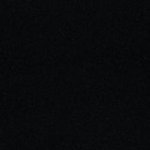Leaderboard
Popular Content
Showing content with the highest reputation on 10/18/2021 in all areas
-
I tested cinematic mode and it was better than I expected and instantly realized 98% of the users have no idea how to extract the most of its creative potential.3 points
-
DJI Pro Cinema Camera Announcement 20 October
Rinad Amir and one other reacted to androidlad for a topic
8K60P, 4K120P RAW2 points -
Sony A7 IV
Juank and one other reacted to Mark Romero 2 for a topic
We should know on the 21st... I think?!?!?! I am both disappointed and relieved. If it was 60fps 4K full frame 10-bit 4:2:2, I would be tempted to sell my Panasonic S1 / S5 cameras. As it is now, not really enough to tempt me.2 points -
Really? I've had the iPhone 13 for a couple weeks now and find "cinematic" mode's fake bokeh rather useless.2 points
-
I have an old P+S Technik Pro 35 PL to B4 P+S Image Converter that projects the lens image on to a vibrating screen to be picked up the a 3-CCD B4 camera sensor. I saw that at one time they sold a version that could work with an iPhone. I was researching if I could convert the Pro 35 adapter for iPhone and found the Pro 35 manual on line. I was not able figure out how to make it work with an iPhone but I did come across what they P+S Technik felt contributed to look of film which I thought might add to the discuss about what make something "cinematic". Film-Look: Which elements are important? Framerate: Film works only with complete pictures, that means progressive with 24 or 25 Hz. Television systems work currently for the most part with half pictures (interlaced), that means with 50 or 60 Hz.The higher the frame rate, the higher is also the motion resolution. A football game with "only" 24 Hz would not be as informative for the viewer as football game with 50 Hz. Exposure time: The common shutter speed result for film cameras result normally from the frame rate. This is mostly 1/48 s., 1/50 s. or 1/60 s., some applications request a shorter exposure time. Electronic cameras work generally in the same manner, but the consolidation between frame rate and exposure time is not as steep. This means at for example 60 frames per second there is also a longer exposure time possible (up to 360 degrees Hell sector = 1/60 s.) Motion blur: One characteristic of the so called film look is the motion blur. Low frame rate / long exposure time lead to a higher motion blur compared to television - benefit from this creative tool. Shutter effect / strobing: Is your pan jerky? Probably your pan velocity is not adjusted to your frame rate (and your motion blur). Check the pan velocity against the focal distance, e. g. in the manual of the ASC (American Society of Cinematographers). Also newer monitors show the pictures often "jerky". Chose your equipment accordingly to your reporting (TV/cinema) and your method of recording (interlaced/progressive). Method of recording: INTERLACED is still a widespread method for increasing the motion resolution (50/60 Hz). Use this method creatively, e. g. for a later slow motion (Example: convert 50/60 Hz interlaced to 50/60 Hz progressive, afterwards rendering with 24/25 frames/s.). De-interlaced is often used for the printout. PROGRESSIVE is used for printing out the material; this is often more close to the film look, because of a lower motion resolution (24/25 Hz). Compression: Unfortunately, the recording quality is highly dependent on the format of recording. A lot of today's used data compression programs are for example highly sensitive to noise or quickly changing picture contents. While recording do not only trust your picture on the monitor (it shows often the uncompressed signal), but test how the recorded signal is behaving in different recording situations (see also: TARGET SPEED above). Depth of field: Like the human eye has a selective perception, also filmmakers and cinematographers use the depth of field for calling the attention of the viewer to specific things or also to detract from something. At the same time the effective size of the picture plays an important part: The larger it is, the lower is the depth of field; small amateur cameras work often with very small sensors and that's why their picture comes across as unnaturally sharp. The P+S Technik Image Converter allow now the identical depth of fi eld like in 35 mm film on an electronic camera with a considerably smaller size of the sensor. Choice of lens: The choice of lens is - especially in combination with high-resolution cameras - clearly visible. Therefore, test the lenses before shooting! See a list with applicable lenses in the annex. Aspect ratio: Because of the fact that the human eye has a considerably larger horizontal fi eld of vision than a vertical one, a lot of films used already very early an analogous larger aspect ratio for achieving an impressively large screen projection (Example: Cinemascope). Like this a different visual effect is produced for the viewer only because of the picture size.1 point
-

Sony A7 IV
Mark Romero 2 reacted to Django for a topic
Sony's in a delicate position. Aside from 4K120p, low-light and RS it's going to be hard to charge that much more for an A7S3 so the cripple hammer may happen on A7IV with 4K60p. On the other hand this camera's direct competitor is going to be R6 that already does non-crop 10-bit 4K60p. But if they manage zero overheat 4K60p, the crop may get overlooked.1 point -
Sony A7 IV
Mark Romero 2 reacted to ntblowz for a topic
It is still possible to do 4K60 at full frame mode in bining mode or lineskipping, as it have with a7R series when doing FF 4K30p. I guess we will find out on the day!1 point -

Panasonic S5 User Experience
Mark Romero 2 reacted to MrSMW for a topic
I have considered all of the 1.8’s and have the 85, but went with the f2 Sigmas instead. If I do switch to the 50 it would be the f1.4 for that extra stop of low light capability ie, f2 to f1.8 is not worth it. To me. Plus it’s supposed to have a bit of magic in the quality/rendering department and that is the most important factor to me. The Sigma 65mm f2 is just stellar though… Possibly a tad tight in some indoor scenarios…but I have the 35 version for that so not a problem and then it does have that little bit more reach than a 50, but without having to go as tight as 85. I like ‘willfully different’ and shooting primarily 65 is just that. I have all Winter and early Spring to decide though so not in any rush or doing anything until after that time so we will see. I’ve read so many times in so many places about how 24mp is enough for social photography but you know what, when you’ve tasted 47, 24 is never going to cut it again. There is a real and significant difference. I hummed and hawed for so long over whether to go S1R or Leica SL2 or just stick with 24mp, but eyes opened and at 1500 euros, insane value.1 point -
1 point
-

DJI Pro Cinema Camera Announcement 20 October
Emanuel reacted to Xavier Plagaro Mussard for a topic
They probably bought Hasselblad for something. Let's see how it turns out!1 point -

Apple is Coming For Y'all: Disruptive Video Production Technologies
greenscreen reacted to Emanuel for a topic
Stuff doesn't need to be lower res to look like cinematic. And yes, higher resolution, more details, etc. help post-production. As much as something doesn't necessarily have to be "cinematic" to be appreciated, I (can only and obviously) second it : ) That said, composition can result in something much more cinematic than resolution, DOF or some other visual aspect per se.1 point -
Apple is Coming For Y'all: Disruptive Video Production Technologies
Emanuel reacted to greenscreen for a topic
Post makes them cinematic.1 point -
I'm not really sure what you're saying, but I can't imagine a universe where "cinematic" means anything like "it looks like someone filmed this with a phone". If, one day, someone makes a phone that does look cinematic, then it will be described as "it looks like the images from larger, better, nicer cameras". I think people have forgotten what cinematic images actually look like.1 point
-

Apple is Coming For Y'all: Disruptive Video Production Technologies
greenscreen reacted to Emanuel for a topic
Yes, Marvel is nothing about video-like, but "something" pretending to be cine-like. That is, if we're willing to ignore many different approaches on what "cinematic" may mean ;- ) - EAG1 point -
Yes, the FP is one of the closest contenders, along with the OG BMPCC, and GH5. How I wish I could pick and choose aspects from each into a single perfect package!1 point
-
The Sigma FP with its Full Frame 8bit RAW to SD card/12bit RAW to tiny SSD/External BRAW and ProRes Raw to HDMI/Removable and tiltable EVF/fully scalable lens options from tiny M mount to FF cine primes and all manual and electronic points in between has just jumped out of my jacket pocket and is screaming "are you not entertained ?"1 point
-

Alexa Bargain
webrunner5 reacted to Parker for a topic
The funny thing is, the bigger budget shoots I have been on, getting to use larger, nicer cinema cams, I usually also have a whole team of art design, beautiful set dec, gaffers and grip lighting everything so nicely, photogenic pro talent, hmu artists... By the time I get around to hitting the red button everything already looks incredible. Lighting is dialed, everything pre-planned, I don't really feel like I need the DR and flexibility of the high-end cine gear because it already looks incredible in-camera, and still would with much cheaper gear. Contrast that with lower budget, run-and-gun stuff, that's when I'm going to potentially miss white balance or not be lighting as well and having to push the camera harder. My point being, it's kind of ironic that on higher end work everything is so dialed in around the camera that raw, extreme DR, amazing color science, etc., is kind of a moot point, and it's on low budget work that I often really wish I could have that level of quality and flexibility to make up for other areas that are lacking.1 point -
This is asking for some love for everyone who loves pictures:1 point
-
The Canon R5 is Also a RAW Shooter
greenscreen reacted to markr041 for a topic
I was shooting in the sun for 3 hours, getting about 30 minutes of 5K RAW video clips.1 point -
Music Video with Bmpcc4K in CNDG and Bmmcc with old 16mm Russian Lenses
greenscreen reacted to alvaromedina for a topic
This is a videoclip that I shot mixing the Bmpcc4k (C/Y Zeiss Primes + Speedbooster) and the Microcinema with russian 16mm Lens (Meopta Largor and Openar), both in CDNG. I also use the Microcinema as an A cam with a more modern look, like in this other videoclip, shot with speedbooster and Sigma 18-35mm (car interiors) and Tokina 11-16mm (day exteriors) I´m still learning and trying to get a more organic look from the Bmpcc4k. I have test the new Gen 5 (not in this videoclip) in Resolve 17 and I found it more pleasant than the Gen4 as most of users says but for now I´m still prefer the more organic texture of the old fairchild sensor. And sorry for my english!1 point


